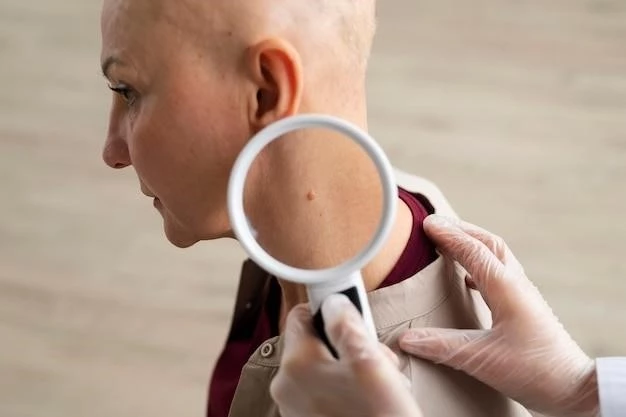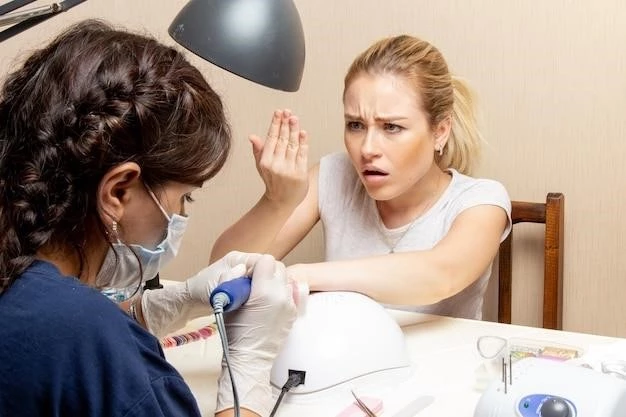Overview of Pemphigus Vulgaris
Pemphigus vulgaris (PV) is a rare autoimmune disease that results in blisters on cutaneous and mucosal surfaces. Pemphigus is derived from pemphix, the Greek word for blister. PV occurs worldwide with varying frequency influenced by geographic location and ethnicity.
Definition and Background
Pemphigus vulgaris (PV) is an autoimmune disease causing blister formation on the skin and mucous membranes. It is the most common form of pemphigus, characterized by intraepidermal blisters and erosions. The condition, though rare, significantly impacts patients’ quality of life. PV typically affects middle-aged and older individuals and can lead to severe complications if not managed promptly. Understanding the autoimmune nature of PV is crucial for accurate diagnosis and effective treatment.
Causes and Triggers
Pemphigus vulgaris is primarily caused by an autoimmune response where the body mistakenly produces antibodies that attack healthy skin cells, leading to blister formation. Triggers may include certain medications or infections that can exacerbate the autoimmune reaction.
Autoimmune Nature
Pemphigus vulgaris (PV) is an autoimmune disease where the immune system mistakenly attacks healthy skin cells, leading to blister formation on the skin and mucous membranes. The body produces antibodies that target proteins responsible for skin cohesion, resulting in the characteristic blistering seen in PV. Understanding the autoimmune nature of the disease is crucial for both its diagnosis and treatment.
Symptoms and Clinical Presentation
Patients with pemphigus vulgaris typically present with painful blistering on the skin and mucous membranes, predominantly in the mouth and on the skin of the chest, back, scalp, and face. The primary lesion is soft blisters filled with clear fluid that can lead to erosions and infections if not managed promptly.
Blisters on Skin and Mucous Membranes
Pemphigus vulgaris (PV) manifests with painful blisters on the skin and mucous membranes. These lesions typically start in the mouth, leading to oral ulcers, and may progress to involve other areas such as the chest, back, scalp, and face. The blisters contain clear fluid and are prone to rupture, forming erosions that can become infected if not treated promptly.
Diagnosis of Pemphigus Vulgaris
To diagnose Pemphigus vulgaris, healthcare providers may conduct skin biopsy to examine tissue from blisters and blood tests to detect specific antibodies associated with the disease. Additionally, endoscopy may be performed to check for oral sores.
Biopsy and Blood Tests
Diagnosing Pemphigus vulgaris often involves a skin biopsy to examine tissue from blisters under a microscope. Additionally, blood tests can help detect specific antibodies associated with the condition, aiding in its accurate diagnosis.

Treatment Options
Treatment for Pemphigus vulgaris typically involves medications aimed at suppressing blister formation. Corticosteroids like prednisone are commonly prescribed and may be used in combination with other immunosuppressive drugs to manage the condition effectively.
Medications for Suppression
Medications aimed at suppressing blister formation are key in treating Pemphigus vulgaris. Corticosteroids such as prednisone are commonly prescribed to reduce inflammation and control the autoimmune response. In severe cases, immunosuppressive drugs like azathioprine may be added to the treatment regimen to improve outcomes.
Prognosis and Complications
Pemphigus vulgaris can have a variable prognosis depending on treatment adherence and disease severity. Complications may arise from long-term corticosteroid use, including diabetes, bone loss, increased infection risk, stomach ulcers, and changes in body fat distribution. Early diagnosis and appropriate management can significantly impact the prognosis and minimize potential complications.
Impact of Long-Term Treatment
Long-term treatment of Pemphigus vulgaris often involves the use of corticosteroids and immunosuppressive drugs, which can lead to various potential complications. Individuals undergoing prolonged corticosteroid therapy may experience side effects such as diabetes, bone loss, increased infection susceptibility, gastric ulcers, and alterations in body fat distribution. Proper management and monitoring of these medications are essential to mitigate adverse effects and ensure the optimal outcome of the treatment.
Support and Lifestyle Management
Living with Pemphigus vulgaris can be challenging, impacting daily activities, sleep, and overall well-being. Connecting with support groups or individuals who understand the disease can provide valuable emotional support and coping strategies. Additionally, learning how to manage stress and prioritize self-care can help individuals navigate the challenges of living with this condition.
Coping Strategies and Support Groups
Living with Pemphigus vulgaris can be challenging, leading to various emotional and physical stressors. Engaging in coping strategies such as mindfulness, relaxation techniques, and seeking support from family, friends, or support groups can help individuals manage the emotional impact of the condition. Joining support groups can provide valuable insights, shared experiences, and emotional support, reducing the sense of isolation commonly associated with chronic diseases.
Medical Consultation and Specialist Referral
When suspected or diagnosed with Pemphigus vulgaris, seeking medical consultation is crucial. Your primary care physician may refer you to a dermatologist specializing in skin disorders for further evaluation and management.
Role of Dermatologists in Diagnosis and Treatment
In the diagnosis and treatment of Pemphigus vulgaris, dermatologists play a crucial role. Dermatologists specialize in skin disorders and possess the expertise to accurately diagnose and manage conditions like Pemphigus vulgaris. They conduct detailed evaluations, including skin examinations, biopsies, and referral to other specialists if necessary, ensuring comprehensive care for individuals with this autoimmune disease.

Research and Development on Pemphigus Vulgaris
Researchers are continually investigating new therapeutic advancements for Pemphigus vulgaris. Recent studies focus on improving treatment efficacy and minimizing side effects, with a particular emphasis on targeted immunomodulatory therapies. Stay informed about the latest developments in the field to ensure optimal management of this autoimmune disease.
Latest Therapeutic Advancements
Ongoing research in the field of Pemphigus vulgaris has led to the development of new therapeutic approaches aimed at improving treatment outcomes. Recent advancements focus on targeted immunomodulatory therapies to address the underlying autoimmune response more effectively. Staying informed about these innovative treatments is crucial for individuals living with Pemphigus vulgaris to access the latest and most effective treatment options available.
Global Prevalence and Demographics
Pemphigus vulgaris is a rare autoimmune disease that occurs worldwide, with varying frequencies influenced by geographic locations and ethnicities. The condition affects individuals between 0.1 and 2.7 per 100,000 people per year, demonstrating variability in different populations, including people of Jewish ancestry and specific ethnic groups.
Geographic Distribution and Ethnic Influences
Pemphigus vulgaris occurs worldwide, with varying frequencies affected by geographic locations and ethnicities. Certain populations, including individuals of Jewish ancestry, particularly Ashkenazi Jews, have higher incidences of Pemphigus vulgaris. The disease manifests between 0.1 and 2.7 per 100,000 individuals annually, highlighting the importance of considering geographic and ethnic factors in understanding the prevalence of this autoimmune condition.
Educational Resources and Awareness
Educational resources and awareness initiatives play a crucial role in increasing understanding and support for individuals with Pemphigus vulgaris. Accessing reliable information from reputable sources, engaging in educational materials, and participating in awareness campaigns can help individuals, caregivers, and healthcare providers stay informed about the latest developments in diagnosis, treatment, and management strategies for this autoimmune disease.
Information Sources and Initiatives
Accessing reliable information sources and participating in awareness initiatives are paramount in understanding and managing Pemphigus vulgaris. Reliable sources like medical websites, research articles, and patient advocacy organizations provide valuable insights and resources for individuals, caregivers, and healthcare providers. Engaging in initiatives that promote awareness and education about Pemphigus vulgaris can help bridge knowledge gaps and foster a supportive community for those affected by this autoimmune disease.
